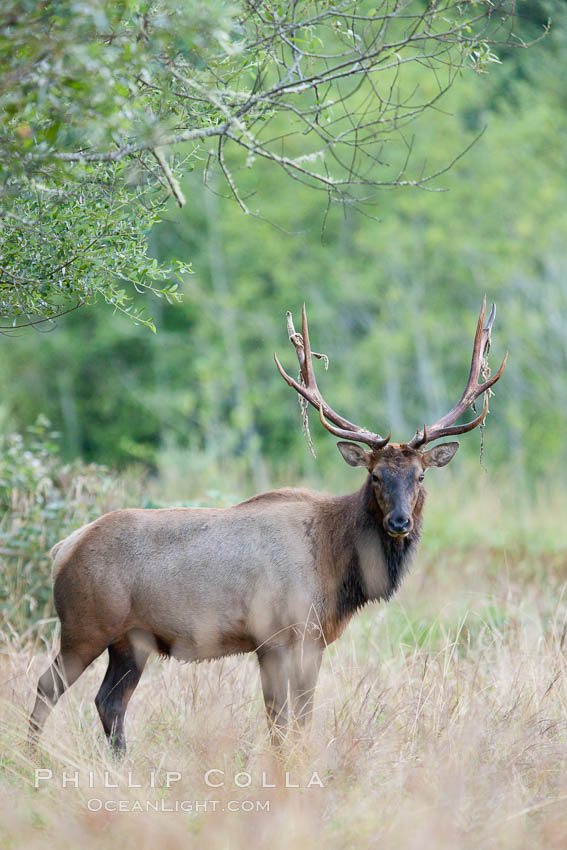

The whole process by which bull elk compete for mating rights is called the rut. See Seattle's Woodland Park Zoo website for complete info on elk physiology and more Elk Rut The antlers are made of bone, covered by a vascular layer of “velvet.” Once the antlers have completed their growth, the velvet dries up, and the elk scrapes off the velvet by rubbing the antlers against trees and brush until they are clean. Last year’s antlers fall off in the spring between February and late April, and soon begin growing again in preparation for the fall mating season. During most of the year, unattached adult bulls live alone or in pairs. A typical elk herd consists of perhaps 20 or so cows, along with calves, a mature bull, and a few juvenile bull elk.Elk predators include bears, wolves, mountain lions, man, and sometimes bobcats, coyotes, or your family dog.( See for more detail on herbivore digestive systems.) They browse the ferns, brush, bushes and brambles of the forest floor, ruminating and redigesting large quantities of low-quality forages. Elk are ruminant herbivore prey animals with digestive systems very similar to that of bovines.By fall, they may weigh up to 250 pounds. Cows are known to babysit groups of calves so the moms can go get a bite to eat. By the time summer has come and gone, so are the spots. Calves are born in spring with spots, weighing around 35 pounds.Bulls typically don’t last past 12 years of age, while a cow elk might typically fall to predation by age 16 – 20. 15 years of age is already middle-age for elk.

Physical: Elk have excellent senses of smell and hearing.
#Roosevelt elk Patch
And, the bull’s-eye buff-colored circular patch on their rumps are lighter and more defined.

The neck fur becomes shaggy and very dark over the winter months. Their heads and necks are very dark, almost black, as compared to other subspecies.
#Roosevelt elk license
This is a part of the Wikipedia article used under the Creative Commons Attribution-Sharealike 3.0 Unported License (CC-BY-SA).Roosevelt Elk in the Olympic National Park. The following year he created Olympic National Park. Roosevelt visited the region and saw the elk named after his relative. The desire to protect the Roosevelt elk was one of the primary forces behind the establishment of the Mount Olympus National Monument in 1909 by President Theodore Roosevelt. It was introduced to Alaska's Afognak, Kodiak, and Raspberry Islands in 1928 and reintroduced to British Columbia's Sunshine Coast from Vancouver Island in 1986. Its geographic range includes temperate rainforests of the Pacific Northwest, extending to parts of northern California. with very rare large bulls weighing more. In both species, mature bulls weigh from 700 to 1200 lbs. None of the top 10 Roosevelt elk would score in the top 20 of Pope and Young's Rocky Mountain elk. The Roosevelt elk, also known commonly as the Olympic elk and Roosevelt's wapiti, is the largest of the four surviving subspecies of elk in North America by body mass, although by antler size, both the Boone and Crockett and Pope and Young records have Rocky Mountain elk being larger.


 0 kommentar(er)
0 kommentar(er)
